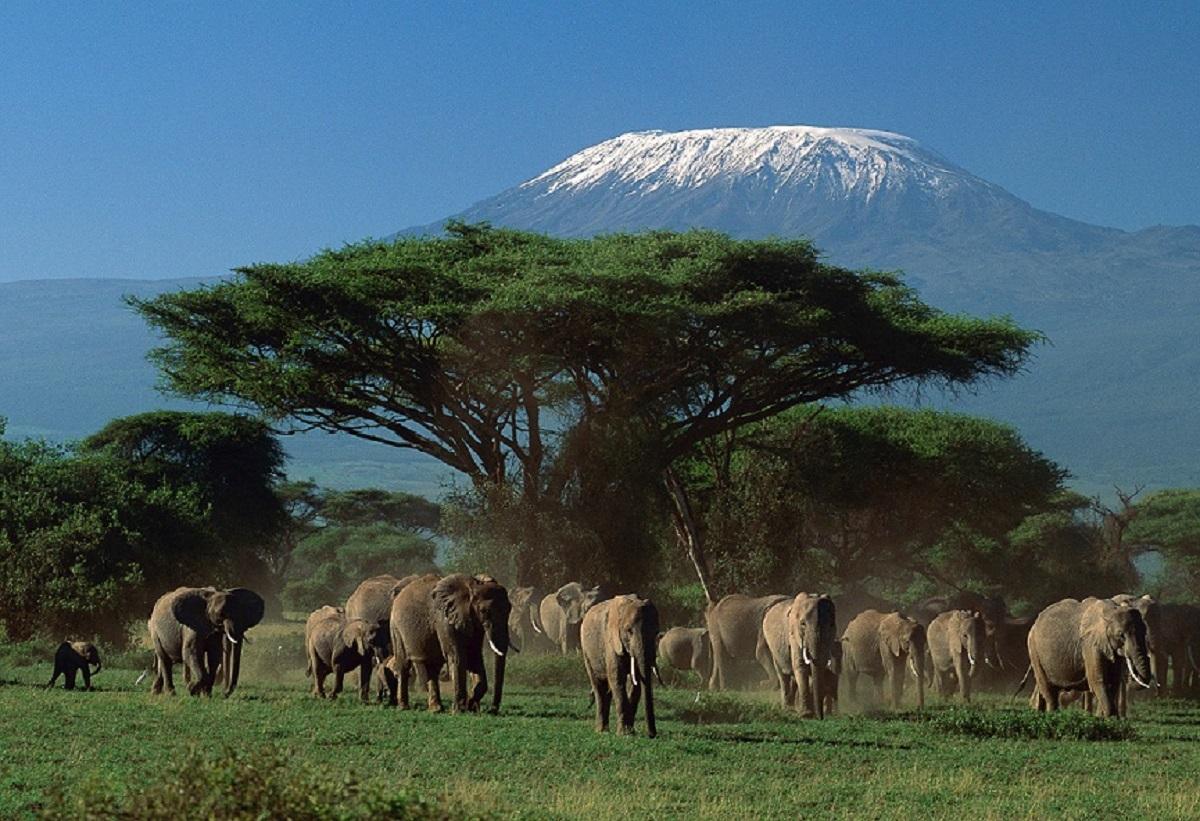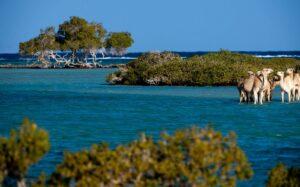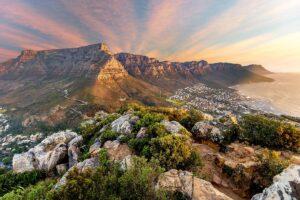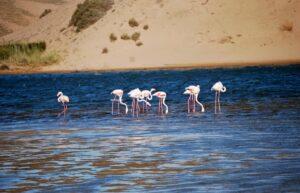Arusha National Park is a captivating destination located in northern Tanzania. It is famous for its varied landscapes, diverse wildlife, and proximity to the bustling city of Arusha. Situated just 25 km from the city, the park is a popular day-trip spot for those looking to experience Tanzania’s natural beauty without venturing too far from urban areas.
While it may not be as famous as some of the larger parks in Tanzania, Arusha offers visitors a unique blend of forest, savannah, and highland scenery, alongside excellent wildlife viewing opportunities. The park’s most famous feature is Mount Meru, an impressive dormant volcano that serves as the backdrop to the park’s varied ecosystems.
Please Download Our Mobile App here
Overview of Arusha National Park
The park covers an area of 137 square kilometers, making it one of the smaller national parks in Tanzania. However, it compensates for its size with a remarkable diversity of habitats, ranging from montane forests to grassy plains.
Arusha is home to the Ngurdoto Crater, a stunning caldera that offers dramatic views, and the Momela Lakes, where visitors can witness large flocks of flamingos. The presence of Mount Meru, the fifth-highest mountain in Africa, adds an adventurous element for those keen on hiking or mountain climbing.
Wildlife in Arusha National Park
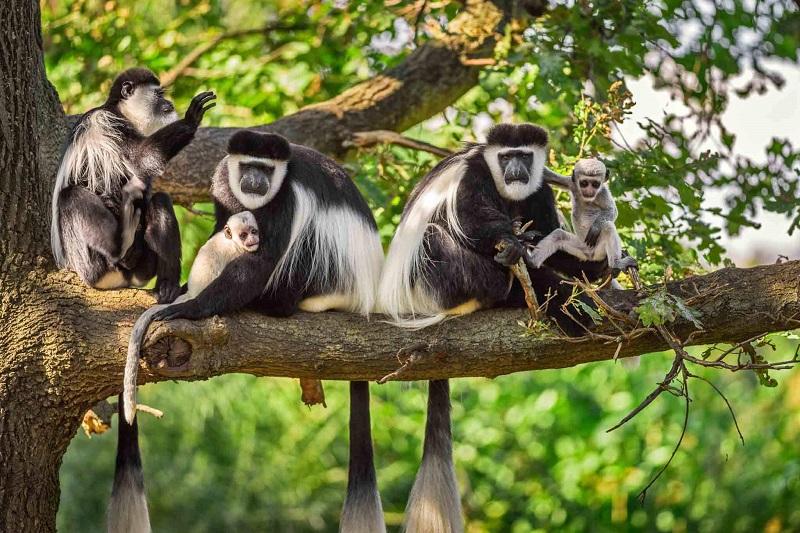
While Arusha is not part of the “Big Five” circuit, the park supports a diverse range of wildlife. Common sightings include giraffes, zebras, buffaloes, and warthogs, as well as the elusive black-and-white colobus monkeys. These monkeys are particularly notable as they are one of the park’s signature species, found in the montane forests of the park.
Other notable species include blue monkeys, waterbucks, and dik-diks, small antelopes that can be seen darting through the underbrush. Predators like leopards and hyenas also roam the park, although sightings are rare due to their elusive nature. Birdlife is abundant, with over 400 species, including forest birds like the Narina trogon and various species of starlings, making it a great spot for birdwatching.
Best Time to Visit Arusha National Park
Arusha National Park is a year-round destination. However, the best time to visit is during the dry season, from June to October, when wildlife is easier to spot as vegetation thins out. This period is also ideal for walking safaris, which are one of the park’s unique features.
In addition to the dry season being ideal for wildlife viewing, the wet season, which typically runs from March to May, can also be an excellent time to visit Arusha National Park for those interested in birdwatching.
The park becomes lush and vibrant, attracting a large number of migratory bird species. This time also sees fewer tourists, allowing for a more peaceful and intimate experience of the park’s landscapes and wildlife
For those interested in birdwatching, the wet season, from March to May, is a great time to visit, as the park becomes lush and vibrant, attracting numerous bird species. Visitors who prefer cooler weather and a more serene environment might also enjoy the park during the rainy season.
Getting to Arusha National Park
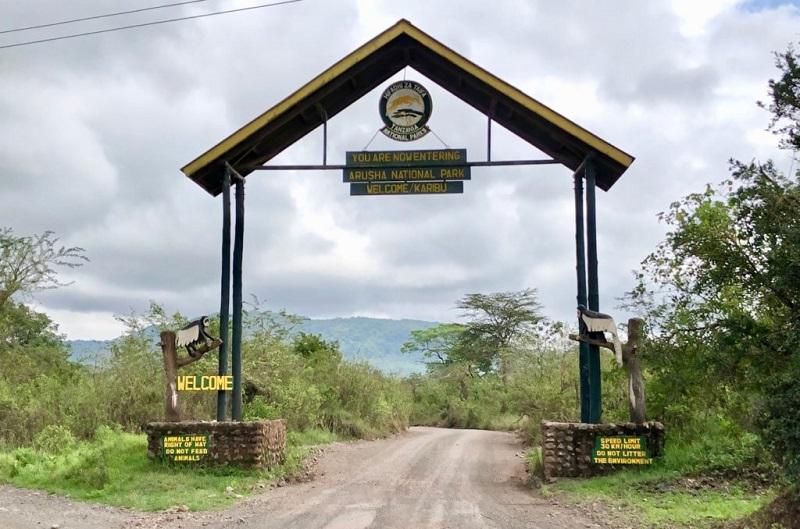
Arusha National Park is conveniently located for travelers coming from Arusha, which can be reached by road or by air via Kilimanjaro International Airport (about 60 km away). From Arusha, a short drive leads to the park entrance, making it easily accessible for a day trip.
Other Activities in the Park
Arusha National Park offers several activities beyond traditional game drives. One of the park’s standout experiences is the opportunity to go on a walking safari, a rare treat in Tanzania. These guided tours offer a closer, more personal interaction with the park’s environment.
Canoeing on the calm Momela Lakes is another popular activity, providing a unique perspective on the wildlife that surrounds the water. For those looking for a more challenging adventure, Mount Meru offers a multi-day climb with breathtaking views, especially of the neighboring Mount Kilimanjaro. One of the most rewarding is birdwatching at Momela Lakes. These lakes attract large flocks of flamingos, as well as other waterfowl such as pelicans, ducks, and waders.
The vibrant wet season brings even more migratory species, making it a haven for bird enthusiasts. For those seeking cultural immersion, visiting nearby Maasai villages adds an enriching dimension to a trip. While the villages are not within the park itself, they are easily accessible and provide a unique chance to engage with the local Maasai community. You can observe traditional dances, learn about the Maasai way of life, and explore their cultural practices, making for an insightful and memorable adventure.
Park Fees at Arusha National Park
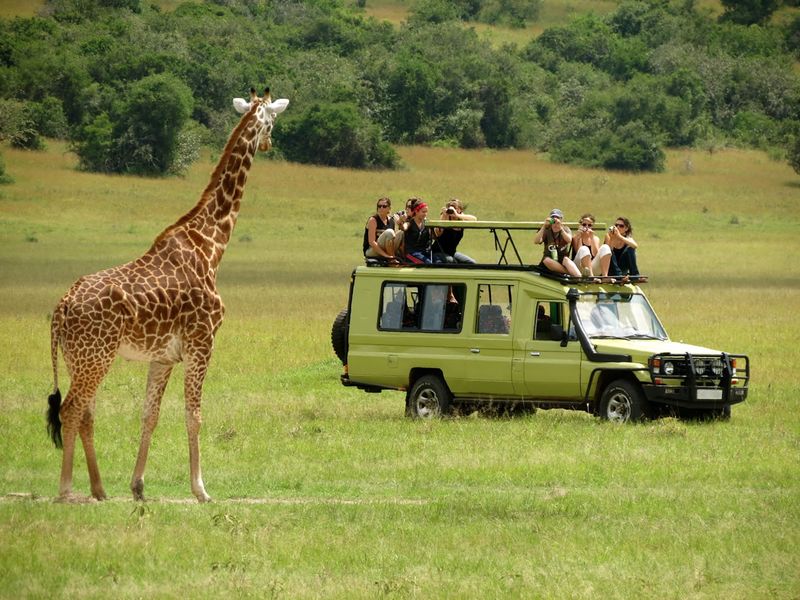
Entry fees for Arusha National Park vary depending on nationality and age, and there are additional fees for activities like game drives, walking safaris, and climbing Mount Meru.
- Non-residents:
The entry fee is about $45 USD per adult and $20 USD per child. - Residents:
Fees are typically much lower, around TZS 1,500 to TZS 3,000 per person for adults and TZS 500 to TZS 1,000 per child. - Additional costs include fees for guided tours, which can vary depending on the type of service requested.
It is advisable to check current rates before visiting.
FAQs
Can I climb Mount Meru?
Yes, Mount Meru is open to climbers. It is a challenging hike but offers stunning views and is a great way to acclimatize for a later climb of Mount Kilimanjaro.
What animals can I expect to see in the park?
Visitors can see giraffes, buffaloes, zebras, flamingos, and the elusive colobus monkeys. Predators like leopards and hyenas are rare but can be spotted.
Is it safe to go on a walking safari?
Yes, walking safaris are safe when guided by experienced rangers. They offer a unique and intimate experience of the park’s wildlife.
Conclusion
Arusha National Park is a remarkable and easily accessible destination for those wanting to explore the natural beauty of Tanzania. Whether you’re looking for a relaxing day or a chance to spot wildlife on foot, the park offers a rich variety of experiences. Its proximity to Arusha makes it an ideal choice for those seeking a quick getaway or an introduction to Tanzania’s wildlife and landscapes.
